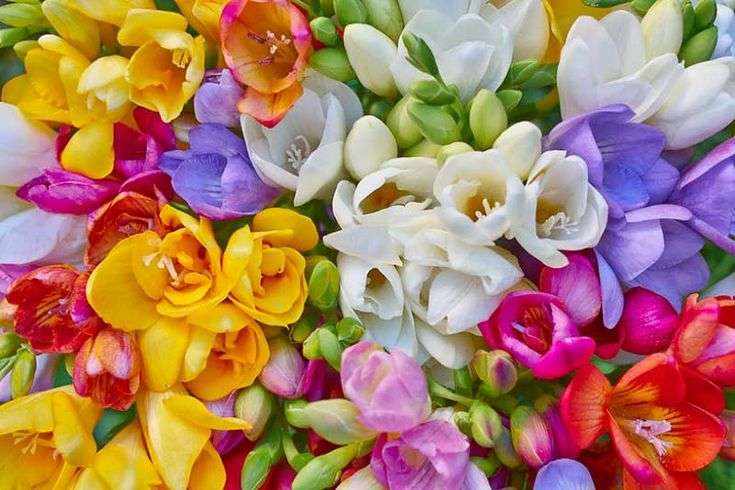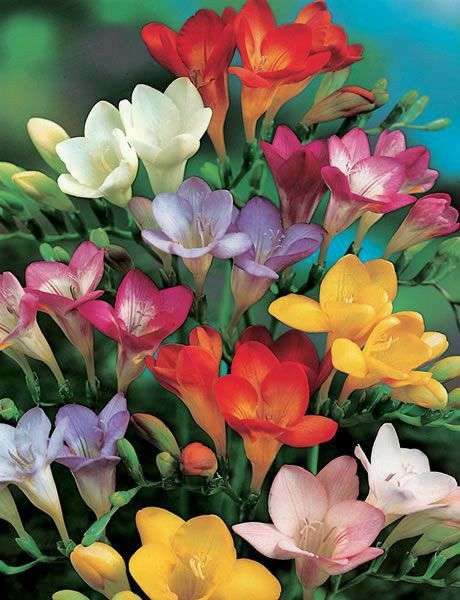





Freesias - Single Mixed (Regular) - 50 bulbs p-pack
Check my rate
| Main centres: | 1-3 business days |
| Regional areas: | 3-4 business days |
| Remote areas: | 3-5 business days |






| Main centres: | 1-3 business days |
| Regional areas: | 3-4 business days |
| Remote areas: | 3-5 business days |
Freesias are fragrant, winter-growing bulbs that produce stunning, trumpet-shaped flowers in spring (August—October). They are easy to grow, making them ideal for gardens, containers, and cut flower arrangements.
Climate:
Thrives in Mediterranean, temperate, and highveld climates.
Ideal for Western Cape, Eastern Cape, Free State, and parts of Gauteng and KwaZulu-Natal.
Prefers cool winters and warm, dry summers.
Sunlight:
Full sun (at least 6 hours daily) for best flowering.
Can tolerate light afternoon shade in hot inland regions.
Soil Requirements:
Well-draining, sandy loam or loamy soil is ideal.
pH: 6.0—7.5 (slightly acidic to neutral).
If soil is heavy, add compost and coarse sand for better drainage.
Best Planting Time:
Autumn (March—May) for spring flowering (August—October).
Depth & Spacing:
Plant 5—7 cm deep and 5—10 cm apart.
Place corms pointy side up for proper growth.
Container Growing:
Use deep pots (at least 20 cm deep) with well-draining potting mix.
Plant corms closely (5 cm apart) for a fuller display.
Ensure good drainage holes to prevent rot.
Watering:
Water moderately after planting.
Keep soil evenly moist during active growth (autumn to spring).
Reduce watering after flowering, as the plants enter summer dormancy.
Fertilizing:
At planting: Apply a low-nitrogen fertilizer (5-10-10 or 3-5-5).
When buds form, feed again with a potassium-rich fertilizer for stronger blooms.
Mulching:
Apply a thin layer of organic mulch to retain moisture and prevent weeds.
Bloom Time:
Flowers from August to October.
Long-lasting blooms with sweet fragrance—great for cut flowers.
After Flowering Care:
Allow foliage to die back naturally to store energy for next season.
Stop watering as the plant enters summer dormancy.
Lifting & Storing Corms (Optional):
In very wet summer regions, lift corms once leaves die back.
Store in a cool, dry place and replant in autumn.
Common Pests:
Aphids & thrips — Spray with neem oil or insecticidal soap.
Slugs & snails — Use organic deterrents or traps.
Disease Issues:
Corm rot — Avoid overwatering and ensure good drainage.
Leaf spot & rust — Improve air circulation and remove infected leaves.
By Corms (Easiest Method):
Freesias multiply naturally, forming small corm offsets.
Divide and replant every 2—3 years in autumn.
By Seeds (Slower):
Can be grown from seed, but takes 2—3 years to flower.
Pairs well with Dutch Iris, Anemones, Ranunculus, and Daffodils.
Ideal for garden borders, containers, and cut flower gardens.
Freesias are low-maintenance, fragrant spring bloomers that thrive in South African gardens. With autumn planting, full sun, and well-draining soil, you'll enjoy vibrant, sweet-smelling flowers every spring!